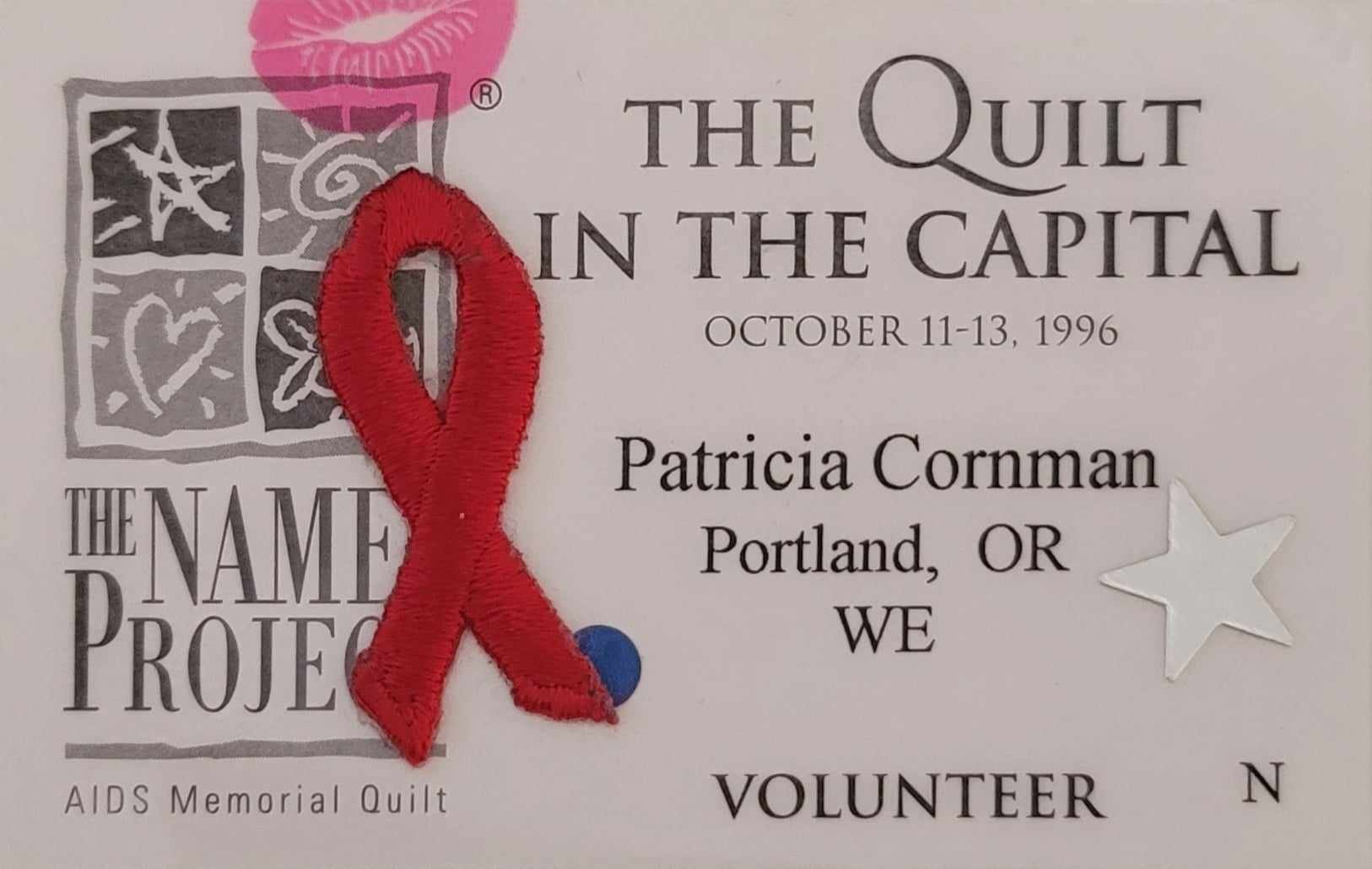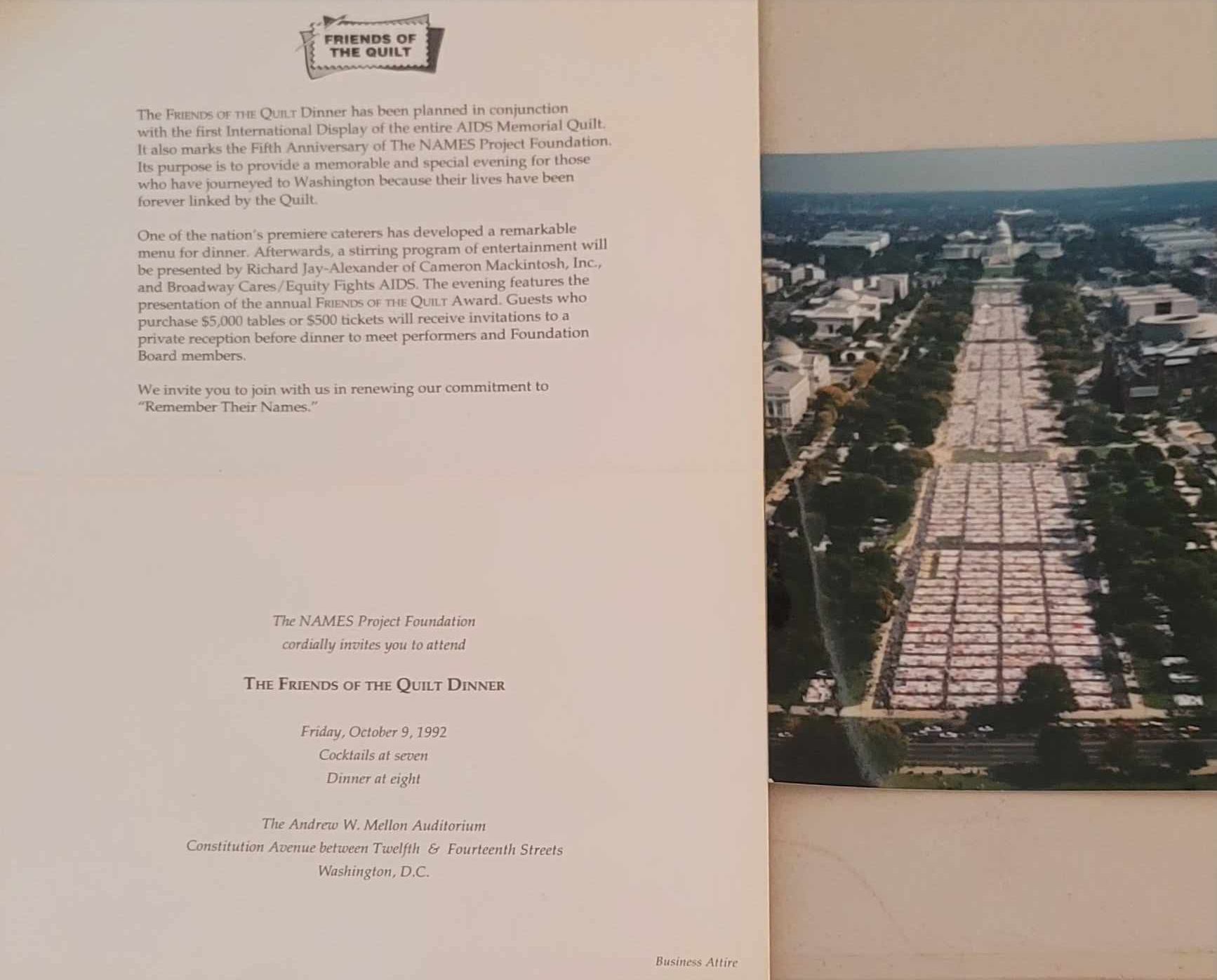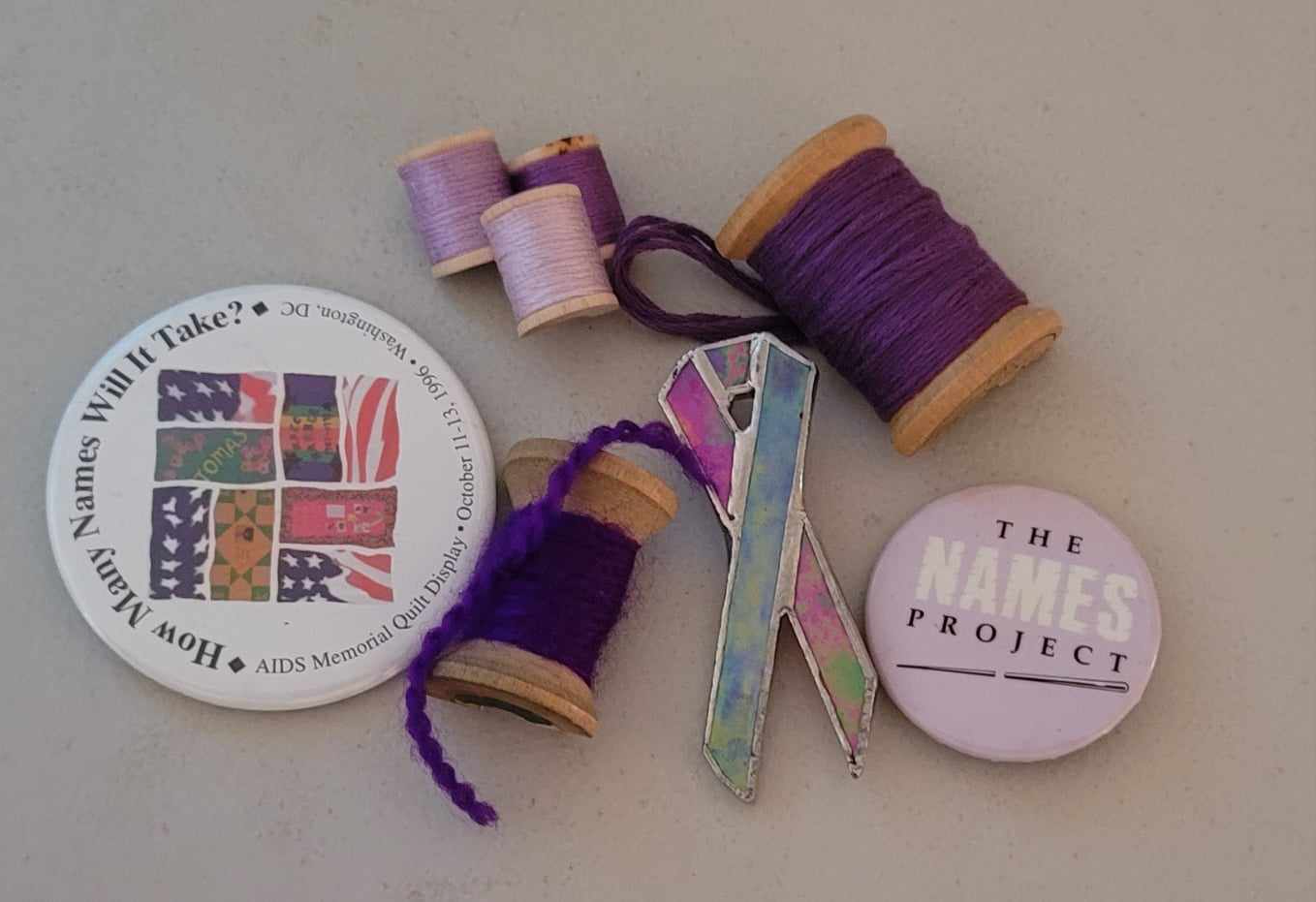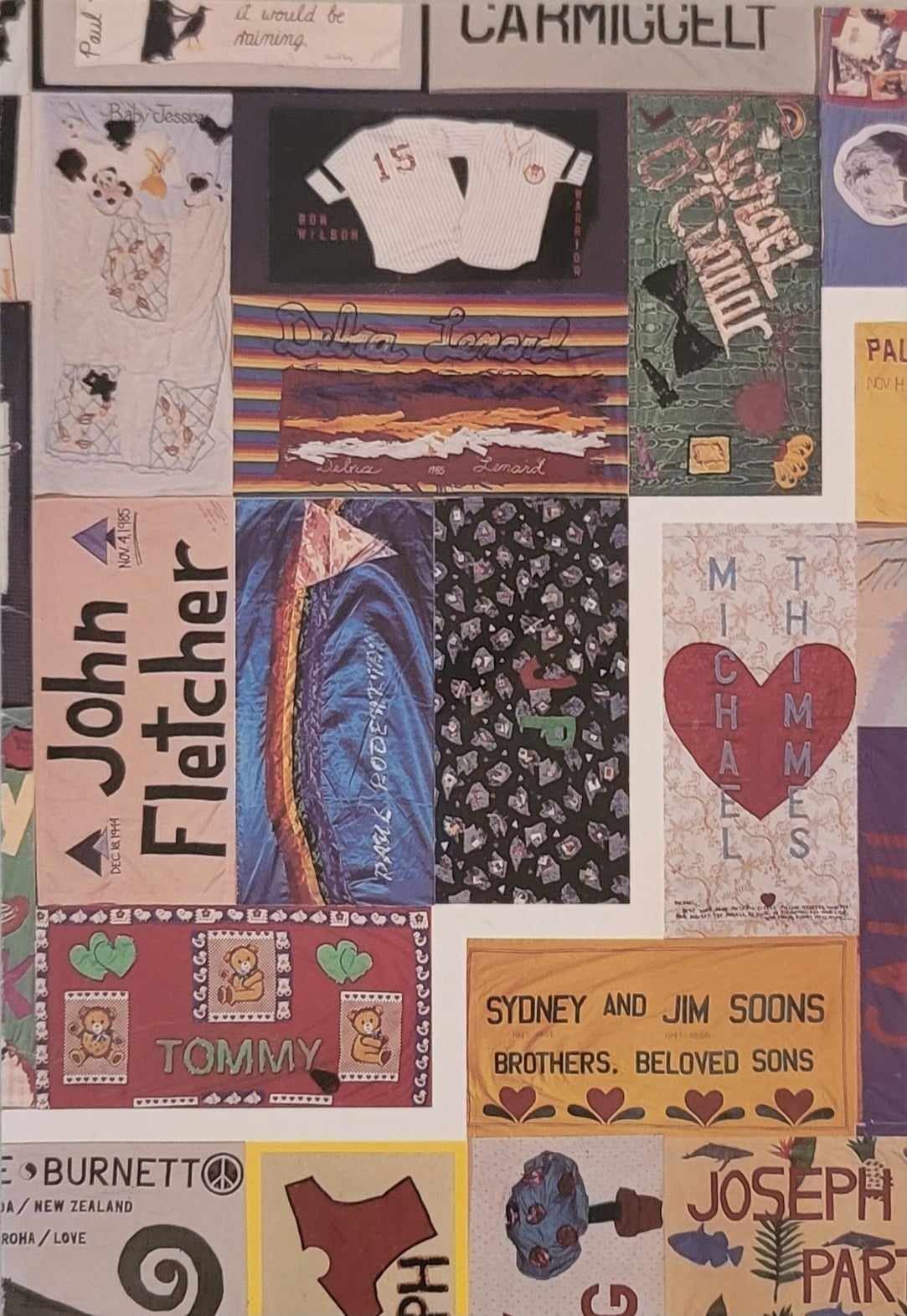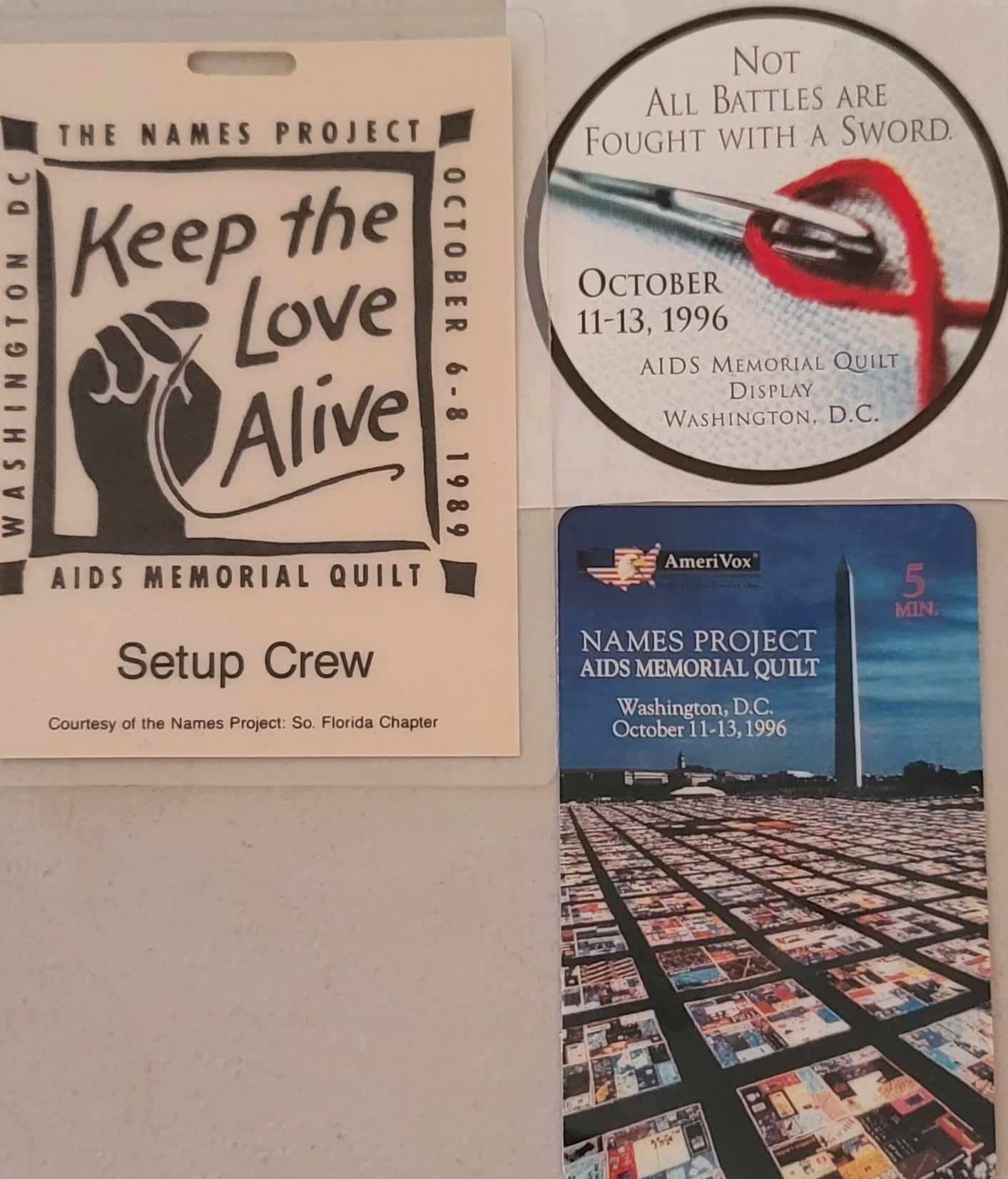The Quilt: A Story of Remembrance
The AIDS Quilt in 1987
There are many who lived through the initial stages of the introduction of the AIDS virus into the world. They remember the fear, bigotry, and discrimination that came with it. The way it was weaponized to target members of the LGBTQ community. In the midst of all of this, human rights activist Cleve Jones was inspired. Not to meet hate with more hate, but rather an endeavor of love and remembrance. Thus, The Aids Memorial Quilt Project was born.
It all began with a series of candlelight marches to honor Harvey Milk and George Moscone. In 1985, Cleve started a new tradition of asking those whom had marched to write the names of their loved ones lost to the deadly virus. These placards were created and placed on the wall of the Federal Building in San Francisco, serving as a colorful and very visual reminder of those that had been taken from the world. Since it looked like a patchwork quilt, the plans were put into motion. Clive created the first panel in 1987 and worked with various people to start the NAMES Project Foundation.
The concept caught on like wildfire and within months, there were panels being sent from several major US Cities. By October 11, 1987, the Quilt made its inaugural display at the National Mall in Washington DC. At this time, it was larger than a footbal field, and took six teams of volunteers to unfold the massive Quilt sections. It held 1,920 names, which were read aloud during this ceremony, which had half a million visitors over the weekend. Due to the response, the Quilt went on tour for the next 4 months, visiting 20 US cities. The quilt had more than 6,000 panels by the end of that tour, less than a year later.
Bridgeport's own Patricia Cornman was able to contribute to this quilt personally during 2 of those national displays. She collected panels and brought them to Washington DC and added them to the edge of the full quilt. "A "small" quilt that fit on one truck would start in San Francisco or Portland, ME." she explained during our interview on the subject. "It grew to fill the entire area from the Washington monument to the White House." she recalls fondly while citing the solemnity and amazing scale of the project.
(A gallery of mementos from Patricia Cornman)
Patricia went on to describe the most memorable part of the ceremony for her, in which every quilt at first had only men's names. Every name would be read aloud, and there were bagpipe players that brought chills to her skin. She made it twice to our capital to witness this momentous event.
Over time, the Quilt continued to grow. With contributions from World Health Organization (WHO), the quilt was able to travel to other countries for the first time. This marked the first World AIDS day, which was December 1, 1988. Over the next year, 20 more countries launched similar projects. By 1992, the Quilt included panels from every US state, and 28 other countries. By the time it returned to our capital, it took over 200 volunteers to carry the panels and display them. The last display would take place in October 1996 where 1.2 million people watched as it covered the entire National Mall.
Although only parts of the Quilt can be shown these days, the National AIDS memorial committee works hard to exhibit the Quilt in parts in various schools, churches, community center and more. Additionally, parts of the Quilt are displayed across the country on World AIDS day. If you'd like to read stories and view images of the Quilt in its Interactive form online, you can do so HEREs://www.aidsmemorial.org/interactive-aids-quilt. Also, you can click on the button below to learn how you might donate to support this important work today.

